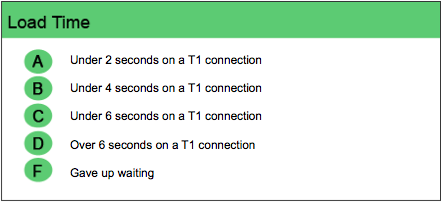Websurfers are not getting any more patient
More people are installing broadband connections in their homes, and more than 94 percent of all active Internet users in the US now access the net with broadband, according to Website Optimization.
Online publishers should be concerned if their websites are slow to load. Users are paying larger Internet bills to have websites pop open, not gradually load. If your site’s load time is sluggish, users will surely take their business to a faster competitor.
Not sure of your websites’ load time? Website Optimization has a free tool that times websites. Test yours and compare it to the Mequoda Load Time Scorecard below to check your site’s performance. We base the scorecard on load time to grade a website’s ability to satisfy all users.

[text_ad]
How did your website perform? If it is in the A to B range, then your website is probably loading fast enough to satisfy your customers and not drive them away. If you are in the C to D range, following some of the tips below may help generate more return visits to your site. If you have an F, your website did not load, and you have a much larger problem on your hands.
To get that instant-load feel, a website has to be designed properly. It has to have:
- A reasonable amount of images,
- Reasonably sized images,
- No automatically running video or audio, and
- Efficiently coded website scripts.
All of these tips can help bring down a website’s load time and increase its score on the Mequoda Load Time Scorecard.
Creating a rapidly loading website is only a small part of creating an effective website design. To learn more about creating websites that drive traffic, gain advertising revenue and sell products, see the Mequoda webinar Generating Website Revenue.


